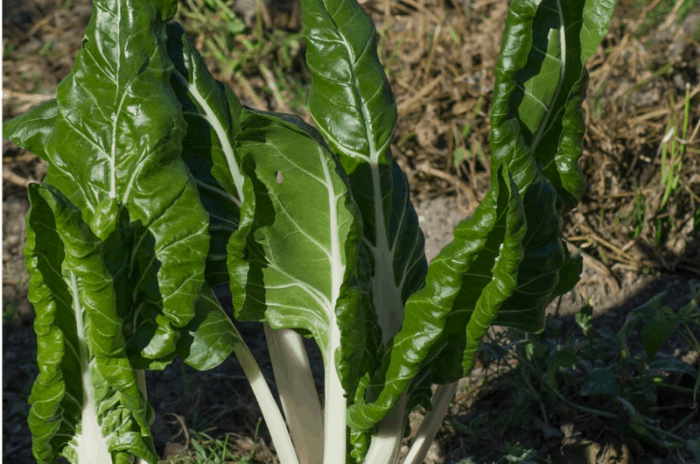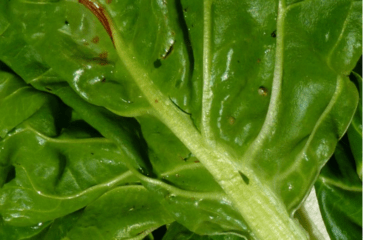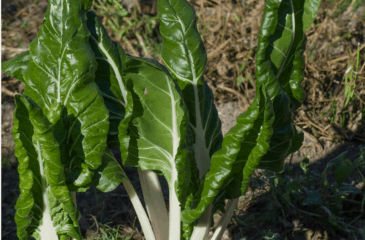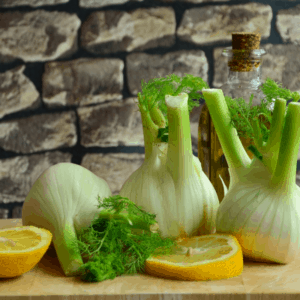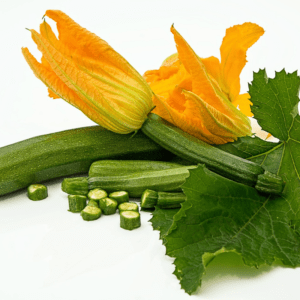Chard, also known as Swiss chard, is a green leafy vegetable, with a delicate taste reminiscent of spinach.
Its texture is sturdier however, both leaf and stalk.
Its leaf blade can be green or reddish in colour; the stalks are usually white, though sometimes a colourful yellow or red.
Both the leaves and the fleshy, tender stalk are eaten cooked – often separately, for the right balance of cooking times (the stems and leaves have different textures, and so take a slightly different amount of cooking time for tenderness).
Chard can be boiled, steamed or pan-fried, or used as an ingredient in omelettes, savoury flans and pies; one of Provence, France’s speciality is a sweet tart: tarte aux blettes—tasty!
Like other green leafy vegetables, chard has highly nutritious leaves, giving it a welcome place in healthy diets.
Its high in mineral salts have laxative and digestive qualities, and can help calm inflammations of the digestive tract.
Benefits of eating chard:
- high in many antioxidants including beta-carotene and flavonoids, which may help prevent certain conditions like heart disease and lung cancer
- high in fibre, that can help maintain weight and promote heart health
- excellent source of vitamin K, a nutrient essential for proper blood clotting and skeletal health
- may help lower blood pressure and cholesterol, which may help prevent heart disease
- high in fibre and antioxidants, which may improve blood sugar control and lower the risk of diabetes
- high in fibre and low in calories, which makes it a weight-loss friendly food.


